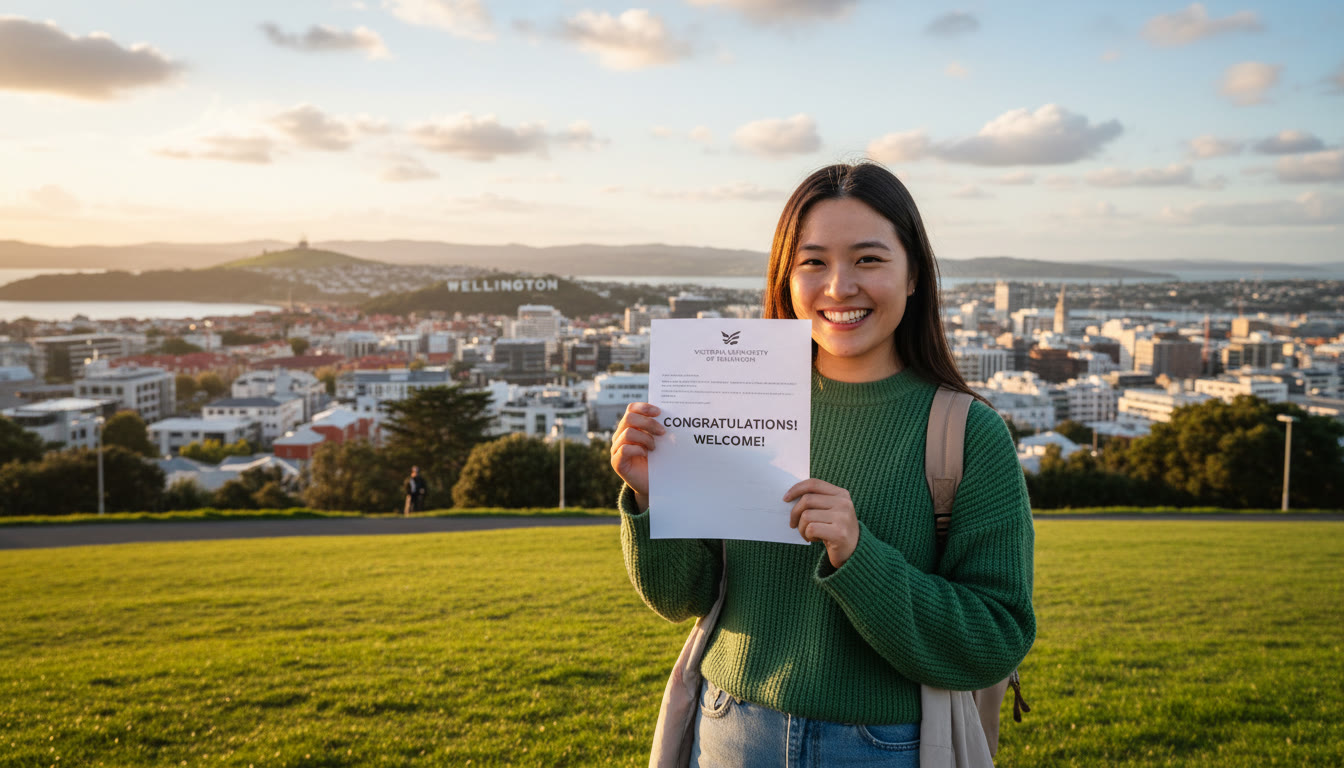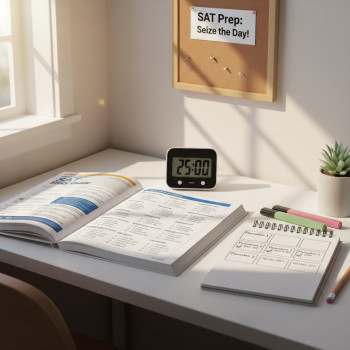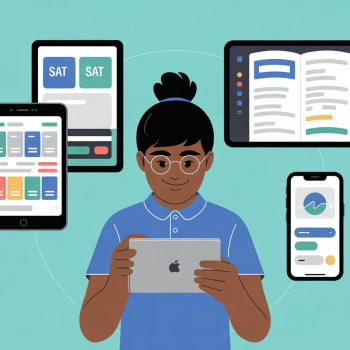Understanding the Big Picture: Can the SAT Help You Get into Victoria University of Wellington?
Thinking about applying to Victoria University of Wellington (VUW) from outside New Zealand? If you’re an international student, you might be wondering whether the SAT fits into the application puzzle. Short answer: yes — the SAT can play a useful role — but how it’s used depends on the program, the level (undergraduate vs. postgraduate), and the evidence of academic readiness the university requires.

Why this matters
Many international applicants come from different educational systems. The SAT is a standardized way to demonstrate your readiness for university-level study, especially for admissions offices trying to compare qualifications across countries. For students aiming at selective programs, a strong SAT can complement your grades, personal statement, and references.
What Admissions Committees at VUW Typically Look For
While each faculty and program at Victoria University of Wellington can have its own nuances, admissions officers generally look for:
- Consistent academic achievement in your high school subjects (or the equivalent).
- Evidence of readiness in core skills: critical reading, quantitative reasoning, and written communication.
- Contextual factors — what opportunities you had and how well you did within those constraints.
- For some programs, specific subject prerequisites (for instance, calculus or a second language may be relevant).
Where the SAT fits in
The SAT can function as one of several standardized measures to support your application. For example:
- It can be especially helpful if your school uses a non-standard grading scale, or if you come from a curriculum that the admissions team is less familiar with.
- For scholarship applications or competitive programs, a high SAT score can strengthen an otherwise comparable application.
- Some departments may accept standardized test results in place of local qualification comparators — always check with the specific faculty.
What Are Realistic SAT Targets for Victoria University of Wellington?
VUW doesn’t publish a single magic number for SAT scores that guarantees admission. Instead, think in ranges and competitive tiers depending on the program you want.
Here’s a practical approach to setting targets:
- Aiming for selective disciplines (e.g., certain Wellington School of Business or Computer Science pathways): target scores in the upper percentiles (roughly 1300–1500+ on the 1600 scale) — this shows you can handle rigorous coursework.
- For many liberal arts, social sciences, or general entry programs: mid-range strong scores (around 1150–1300) complement strong school results.
- If your high school GPA is exceptional, slightly lower SAT scores may still be acceptable — conversely, if your transcript is less well-known internationally, a higher SAT can help balance the application.
Remember: these are directional ranges. Admissions decisions are holistic, so an SAT score is one piece of the story.
How to Prepare: A Practical Roadmap
Preparing for the Digital SAT and an international application requires strategy, consistency, and smart resource use. Here’s a step-by-step roadmap you can follow over a typical 3–6 month prep timeline.
Phase 1 — Diagnostic & planning (Weeks 1–2)
- Take a full-length, timed Digital SAT practice test to identify strengths and gaps.
- Set a realistic target score based on your intended program and the competitive tiers above.
- Create a study calendar with daily or weekly goals, accounting for school workload and extracurriculars.
Phase 2 — Skill building & content review (Weeks 3–10)
- Focus on core skill blocks: Reading comprehension strategies, command of evidence, algebra and problem-solving, data analysis.
- Use short, timed practice blocks to build stamina and pacing.
- Review mistakes carefully — understanding why you missed a question is 10x more valuable than the raw question count.
Phase 3 — Test strategy & polish (Weeks 11–16)
- Practice full-length, timed Digital SATs every 1–2 weeks.
- Refine timing strategy for each section and learn to triage questions (when to move on).
- Build confidence with targeted practice on toughest question types.
Phase 4 — Final checks & application alignment (Last 3–4 weeks)
- Make sure your test dates align with university application deadlines and scholarship deadlines.
- Request score reports early if required by the admissions office; gather supporting documents.
- Polish personal statement/essays, get references ready, and prepare any required subject documentation.
How to Present SAT Scores in Your Application
When applying to Victoria University of Wellington, present your SAT scores alongside your transcripts and any other standardized test results. A few tips:
- Highlight your strongest evidence of quantitative and verbal reasoning. If your math score is a particular strength and you’re applying to a STEM-related program, make that clear.
- If you used an official SAT test date that aligns with academic timing (for example, before the admission round), include the date so reviewers see when the test was taken.
- Provide context where helpful. If your school lacked advanced courses but you achieved a strong SAT, a brief note in your application can help admissions interpret your accomplishment.
Sample Score Comparison Table
This table gives a hypothetical breakdown of how different SAT score ranges might be interpreted for international applicants to VUW. These are illustrative — treat them as planning guides, not official cutoffs.
| Score Range (1600 scale) | How Admissions Might View It | Suggested Next Step |
|---|---|---|
| 1500–1600 | Very strong evidence of academic readiness; competitive for selective programs. | Apply confidently; emphasize subject fit and leadership in essays. |
| 1300–1490 | Strong; good balance with strong school grades and extracurriculars. | Target further practice on weak subscore; highlight coursework or projects. |
| 1150–1290 | Solid; fits many programs but might be less competitive for top scholarships. | Consider a retake if time allows; strengthen application via essays and references. |
| 1000–1140 | Acceptable in many contexts but may need additional supporting evidence. | Boost with improved grades, subject tests (if relevant), or additional coursework. |
| <1000 | May be below competitive thresholds for selective entry; admissions will look harder at context. | Strongly consider a structured prep plan or tutoring before applying. |
Common Questions from Families — Answered
1. Is the SAT required to apply to VUW?
Not always. Many programs accept multiple forms of evidence of academic readiness (e.g., national qualifications, high school grades, or other recognized tests). The SAT is often optional but can be a valuable supplement, especially for international applicants whose school system is less familiar to VUW. Because policies can vary by program and year, check the specific faculty’s entry requirements and timeline.
2. Which SAT sections matter most?
On the Digital SAT, overall evidence of reading, writing, and math skills matters. If you’re applying to a quantitatively heavy program, focus on maximizing your Math score. For humanities or social sciences, strong evidence in reading and writing will shine through. Admissions usually consider the total score and subscores together.
3. How do I report scores from the Digital SAT?
Report your official scores as issued by the testing authority. If you’re in the middle of the application season, allow time for score reporting to reach the university or to be available when you submit your application.
How Personalized Tutoring Can Help — Where Sparkl Fits In
Personalized guidance can make the difference between a good score and a great one. For many students, targeted one-on-one support shortens the learning curve and builds confidence quickly.
- Sparkl’s personalized tutoring offers 1-on-1 guidance tailored to each student’s unique gaps — whether that’s algebraic fluency, reading stamina, or evidence-based writing.
- Tutors can create a tailored study plan that aligns with both test dates and university application deadlines, helping you prioritize effectively.
- AI-driven insights (when available through a tutoring platform like Sparkl) can help track progress with data-backed recommendations so you focus on the areas that move your score most.
When used thoughtfully, tutoring is not about replacing your study — it’s about amplifying it, making each hour of practice more efficient and targeted.
Application Timing: When to Take the SAT
Timing is practical and strategic. Here are some considerations to guide your schedule:
- Work backwards from Victoria University of Wellington’s application deadlines (including scholarship deadlines). Aim to have your strongest scores submitted before the final application dates.
- Allow for at least one retake opportunity if you need to improve — plan initial testing at least 2–3 months before your final application submission date.
- Remember score reporting windows and potential processing time for international documents — early is usually better.
Beyond the Scores: Strengthening the Whole Application
VUW, like many universities, looks at the whole candidate. Here are practical ways to make your application stand out beyond test scores:
- Write a compelling personal statement that links your academic interests to experiences, projects, or challenges you’ve tackled.
- Collect strong references that speak to your academic readiness and personal qualities — teachers who can cite concrete examples are best.
- Showcase relevant work or research — even school projects or community initiatives count when they demonstrate curiosity and effort.
- Demonstrate fit with the program — explain why VUW is the right place for you and how you will contribute to the campus community.
Practical Checklist Before You Submit
Use this quick checklist to ensure your application is ready and presents the strongest possible case:
- Confirm program-specific academic prerequisites and provide documented proof if needed.
- Verify SAT score reporting timelines and send scores early.
- Proofread essays and ask a teacher or mentor for feedback.
- Organize certified transcripts and English-language documentation if applicable.
- Confirm references have been submitted, and follow up politely if needed.
Real-World Example: How an Applicant Put It Together
Consider Maya, a hypothetical applicant from India aiming for a Bachelor’s in Computer Science at VUW. She combined the following:
- School grades with strong math coursework (AP/IB-style subjects where available).
- An SAT score of 1420 (solid math and strong evidence-based reading), taken early enough to allow one retake.
- Internship experience in a local tech lab and a clear personal statement connecting these experiences to her interest in algorithms and data science.
- One-on-one tutoring sessions focused on algebraic problem-solving and test pacing; her tutor used timed practice tests and targeted drills, which increased her confidence and efficiency.
Her application told a consistent, focused story — test scores supported her academic readiness while experiences and writing proved commitment. That combination is what really resonates with admissions reviewers.
Final Thoughts — Be Strategic, Not Stressed
Applying to Victoria University of Wellington from abroad is an exciting journey. The SAT is a tool in your kit — powerful when used strategically, but never the whole story. Focus on preparing smartly: set realistic score targets, build a thoughtful application narrative, and seek help where it speeds your learning.
If you want highly efficient, personalized support, tutoring services like Sparkl can help map a realistic plan, provide targeted 1-on-1 instruction, and use data-driven feedback so every study hour counts. Whether you self-study or work with a tutor, plan early, practice purposefully, and tell your story clearly in your application.
Quick Reminders
- Check the specific entry requirements for your chosen program at Victoria University of Wellington — they can vary by faculty and change over time.
- Plan test dates with application deadlines in mind and leave time for score reporting.
- Use practice tests to guide your study and consider personalized tutoring for targeted improvement.

Want Help Planning Your Path?
If you’d like, create a simple plan with your target program and timeline — I can help you draft a study calendar, suggest a realistic SAT target based on your current practice score, and outline the materials and tutoring approach that will get you there. Your journey to Wellington can be focused, calm, and ultimately rewarding — one step at a time.














No Comments
Leave a comment Cancel